#Bristol. Beyond Banksy: Bristol's Descent into the Abstract, One Pavement at a Time.
From "Exemplary" Murals to "Martian Measles": A Critique of Bristol's Painted Paradox.
If I were ever pressed to describe Bristol in a solitary word, beyond the cascade of expletives that readily spring forth without so much as a polite cough, I'd begrudgingly offer "abstract." And that pronouncement would be delivered with a pregnant pause, a deep breath, and perhaps a slight wince. Because, truly, if Bristol were to manifest as an artistic genre, "abstract" it would be. Not the kind that hangs in revered galleries, mind you, but rather the sort that suggests a particularly exuberant five-year-old was let loose with a palette and a ream of paper. You know, the kind where the vibrant hues migrate with joyous abandon to the walls, the floor, the ceiling, and every stitch of clothing within a ten-foot radius, utterly bypassing the intended canvas.
Now, before you unleash the hounds of indignation, let me be clear: I am not so utterly devoid of aesthetic appreciation as to deny the undeniable brilliance of some of Bristol's finest murals and the exemplary artists who wield the spray can or brush with genuine genius. Their work, I concede, is a testament to true talent and elevates the cityscape from mere brick and mortar to something genuinely captivating.
But as for the rest? Well, let's turn our gaze to the perplexing phenomenon of "tagging." What, precisely, is the profound message conveyed by these cryptic scrawls, beyond serving as the human male equivalent of a dog staking its claim on a lamp post? At least canines are lauded for their intelligence and make meaningful contributions to society. Yet, here we are, with a significant percentage of Bristol's exposed vertical surfaces now utterly defiled with what can only be described as visually disruptive nonsense – meaningful to a select few, perhaps, but utterly indecipherable to the vast majority of the city's intelligent populace.
And just when one might have thought the assault on our visual sensibilities was confined to the upright, it seems the horizontal surfaces have now become fair game. One can only assume this latest artistic frontier marks a bold, if utterly baffling, evolution in Bristol's ongoing, bewildering flirtation with "abstract" expressionism.
Indeed, this horizontal haemorrhaging of paint probably began with the rather perplexing decision to render our pedestrian crossings in a kaleidoscope of rainbow colours. A cynical mind (and mine is often that particular shade of grey) might suggest this sudden burst of civic vibrancy was nothing more than an ingenious method of depleting end-of-year budgets, a glorious "use it or lose it" flourish designed to ensure no surplus funding remained unspent. Why not, indeed? Or am I simply being, as ever, typically cynical? And there was me thinking that in the past year, it was only the elected Green representatives of our council that were abstract in both thinking and doing!
Regardless of the fiscal motivations behind such a riot of colour, like an insidious outbreak of Covid, the idea has metastasised. As expressed in yesterday's lament concerning South Bristol's Greville Road in Southville, the tarmac there has apparently contracted a severe case of the measles. But not the common, Earth-bound variety, oh no. According to one particularly discerning resident, this affliction presents itself as something far more exotic, "exactly like" Martian measles. One can only imagine the intergalactic origins of such a virulent strain of aesthetic over-exuberance.
In the hallowed halls of Bristol's City Hall, where vegan sausage rolls fuel revolutionary thought, the Green Party Cabinet convenes, their collective gaze fixed firmly on an abstraction so profound it makes quantum physics look like a colouring book. Their magnum opus, the "liveable neighbourhood," is a shimmering mirage of pedestrianised bliss and segregated areas with a riot of paint, seemingly conjured from the ether by incantations whispered over lukewarm kombucha. Motor vehicles, you see, are the unholy chariots of the apocalypse, banished to the outer circles of civic purgatory, while anything on two wheels – from penny-farthings to unicycles, often piloted by individuals in full Lycra ensembles – is exalted as the sacred transport of a utopian future. It's a vision so brilliantly, bewilderingly abstract, it's almost as if they're designing a city for an alien race that communicates exclusively through interpretive dance and has a curious aversion to internal combustion.
And speaking of baffling artistic endeavours and the nefarious implications of year-end budget surpluses, I simply must address the utterly bewildering abstract expressionism now adorning Bristol's very own railway paths, as evidenced by the accompanying photographic evidence. I cannot, for the life of me, be the only sentient being utterly bamboozled by these tarmac aberrations.
Observe, if you will, the first image: a series of concentric, murky green spirals, seemingly flung onto the path with the same casual abandon as a frustrated toddler discarding a half-eaten biscuit. What is this, exactly? A tribute to snail migration patterns? A subliminal message encouraging circular thought? Perhaps a forgotten pagan ritual for summoning earthworms?
Then, our eyes are assaulted by the second image: an array of disconnected, baby-blue geometric shards, scattered haphazardly across the asphalt like the shattered remnants of a particularly incompetent alien jigsaw puzzle. Are these meant to represent broken dreams? The detritus of a failed attempt at urban planning? Or, dare I suggest, the sheer, unadulterated boredom of someone with access to a large bucket of blue paint and an afternoon to kill?
What, I implore, is the meaning behind this baffling sequence? Is there some arcane code hidden within these painted patterns? A subconscious message, perhaps, intended to subtly influence our pedestrian peregrinations, guiding us towards an undisclosed destination or, worse yet, a designated area for voluntary municipal contributions? One can only speculate that this is a sophisticated psychological operation designed to drive the city's more rationally-minded inhabitants to the brink of a delightfully abstract madness.
Indeed, given the utterly inscrutable nature of these public art installations, I feel compelled to consult more esoteric sources. One must consider the possibility that we, the blissfully unaware denizens of Bristol, are simply missing out on some profoundly significant, cosmically ordained events. I must, therefore, check the Rosicrucian calendar for 2025 immediately.
After all, if the turn of the millennium taught us anything, it's that those grand, earth-shattering forecasts for the Year Two Thousand that never materialised were merely a precursor to the subtly baffling, daily absurdities of the current era. Perhaps these painted paths are not merely abstract art, but rather an arcane Rosicrucian ‘Green’ prophecy, an alchemical transmutation of public funds into visual riddles that only the truly enlightened (or the incredibly bored) can decipher.


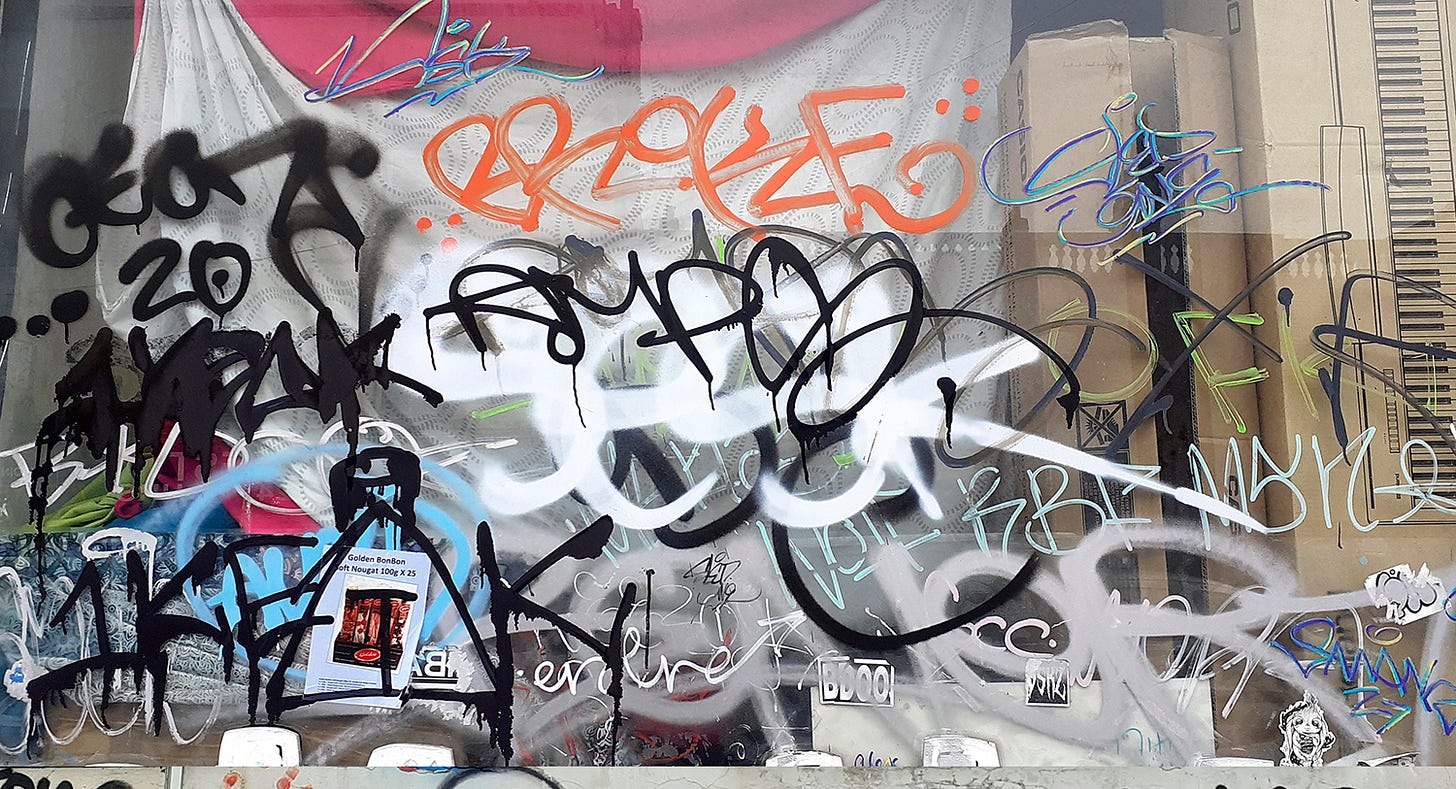
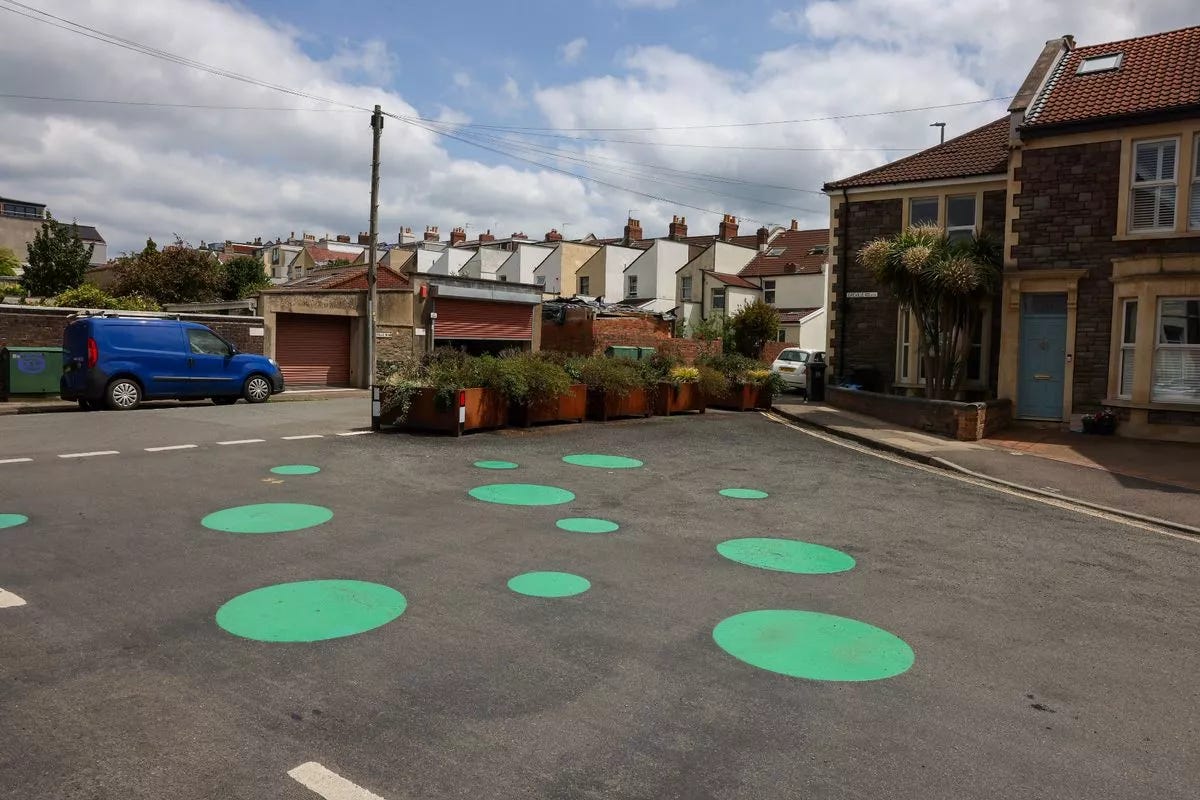
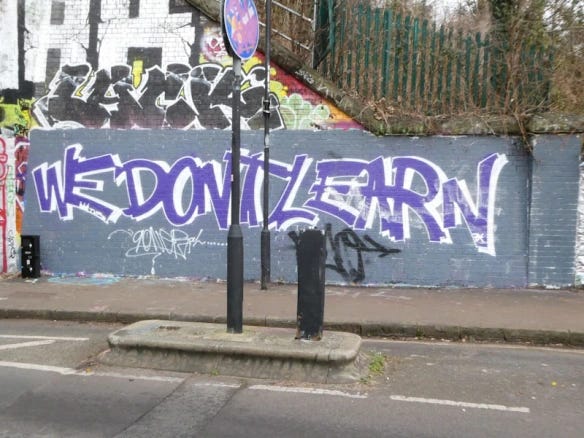
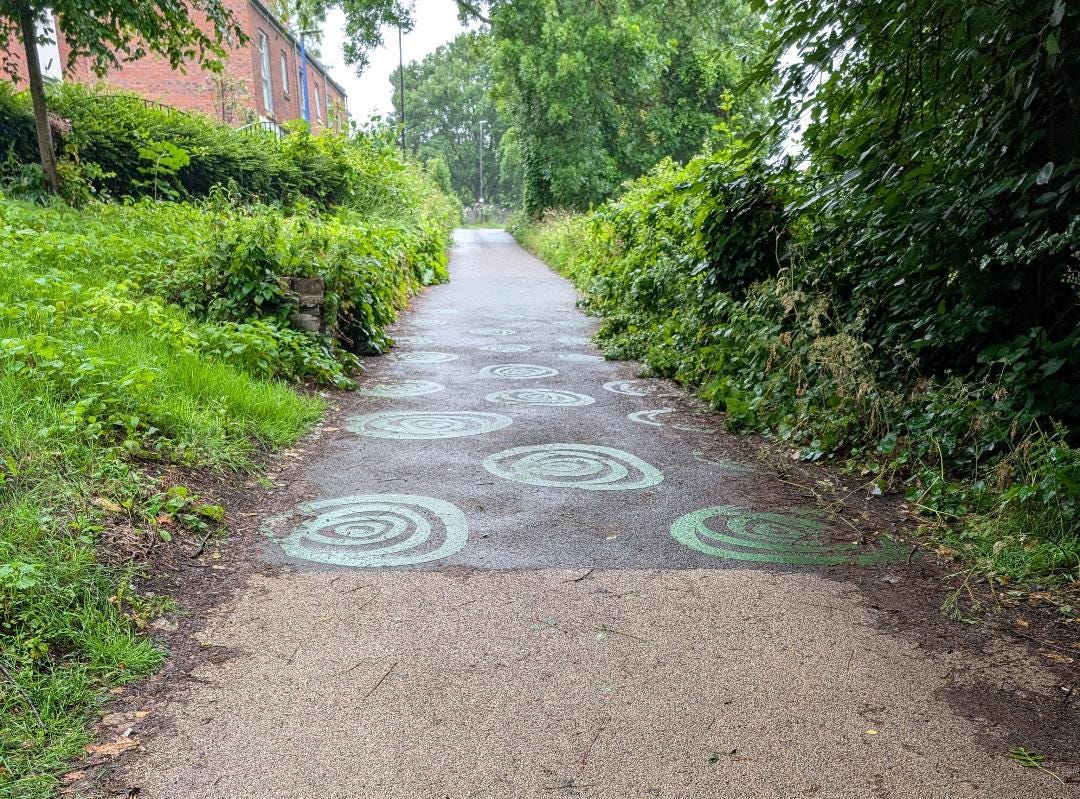
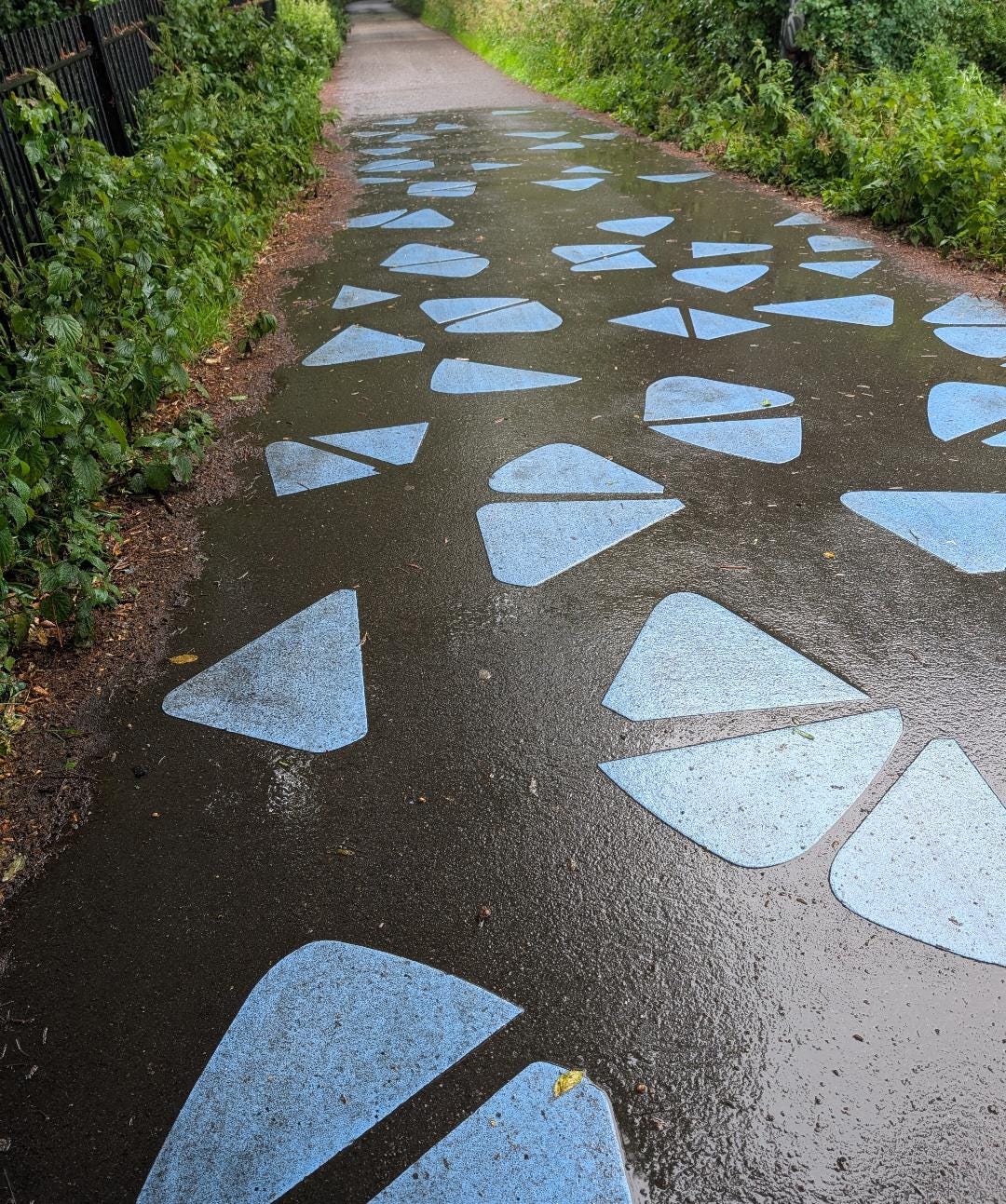
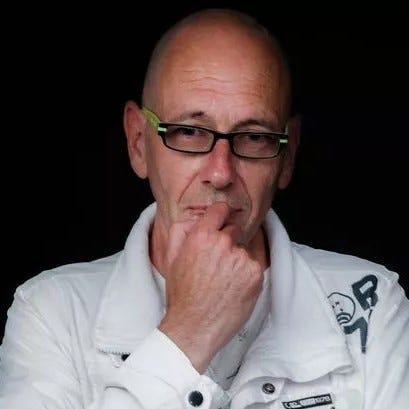
I put in a question to a transport committee meeting about the railway path Playschool nonsense a while back. You are reminding me to go and check what the response was!
I dismissed the Martian theory because they would have used red blobs, not green. Which is the green planet? That's us isn't it? Or are we just blue? Is it the Irish at it again?
Seen this? L Pondweed at his finest. https://www.bristol247.com/news-and-features/news/mystery-green-dots-solved/